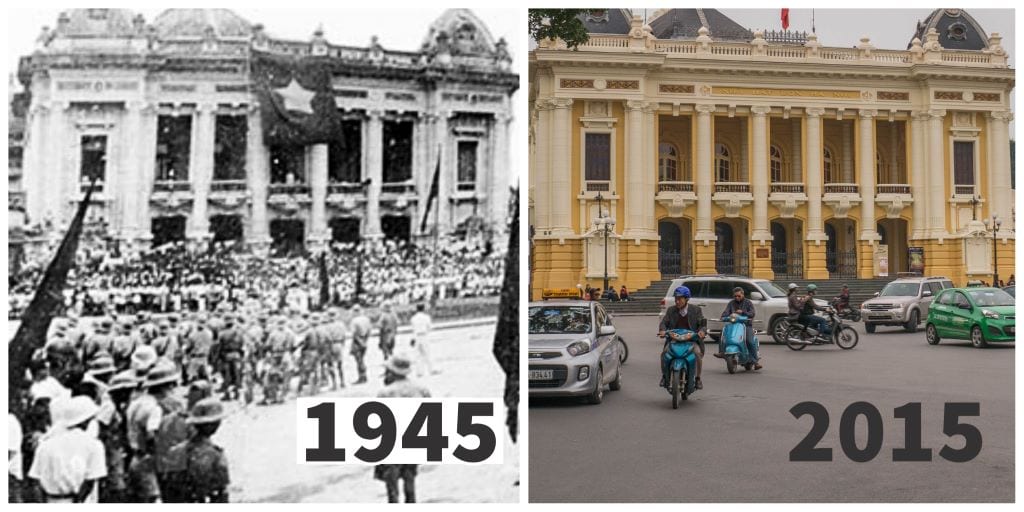Buildings are among the greatest silent storytellers. Seeing historic places then and now shows how these places are a constant in a rapidly changing world. It is a story that never ends. In Rome, tourists gaze at the same Doric columns that Julius Caesar and Augustus touched. Visitors to Hiroshima see a modern city built on the remains of a shattered community. Historic images hold ‘hidden’ information about its subject.
Look around the subject of the image. The context of the site has changed, the world around may be completely different. Sometimes photos show how things haven’t changed, which is just as important – it shows how the community honors a place, and the care it takes to preserve it. There are online communities dedicated to documenting sites, photographing them as they evolve. These histories are vital to understanding place, local values, and the impact of world events on local landmarks.
Arc de Triomphe, Paris, France, 1920 and 2015

The Arc De Triomphe was a love letter from Napoleon to his soldiers after the Battle of Austerlitz. When he returned to France, he decreed the Arc built to honor the brave men of his army. The Arch of Titus in Rome inspired the design, fitting Napoleon’s love of classical architectural forms. After some debate about its placement, it sits at the hub of the Champs de Elysees.
It sits at the hub of 12 roads, including wide, scenic boulevards, giving visitors a sweeping view of Paris. King Louis Philippe, after making his own alterations, dedicated the Arc de Triomphe in 1836. The modern image shows a busy traffic circle around the Arc. “Paris est Charlie,” temporarily projected on the Arc is a response to eight staff members at Charlie Hebdo magazine killed in a 2015 extremist attack.

